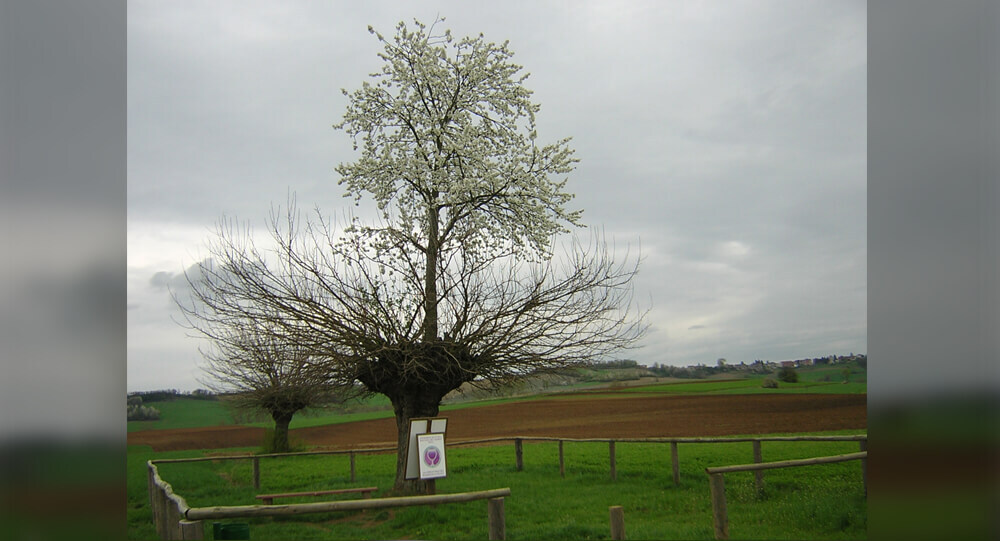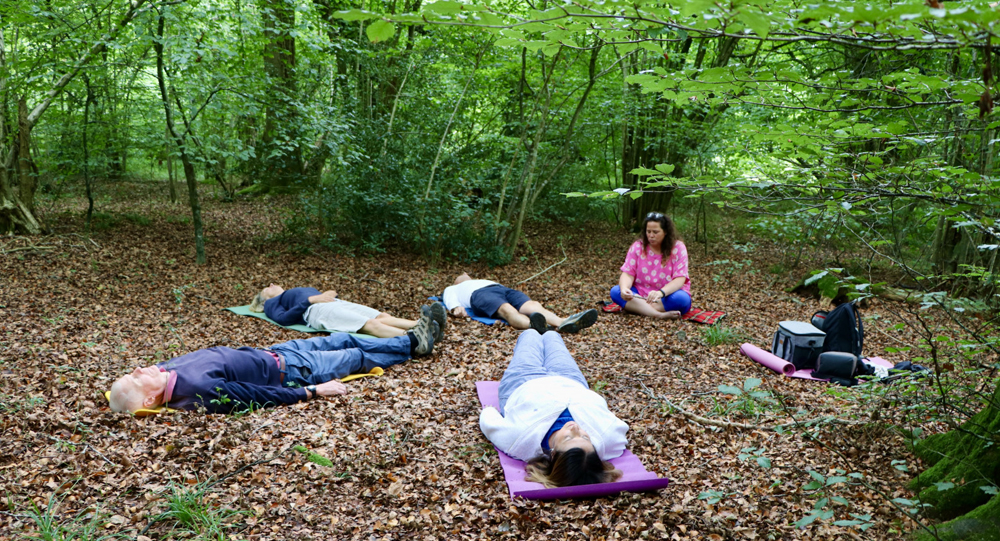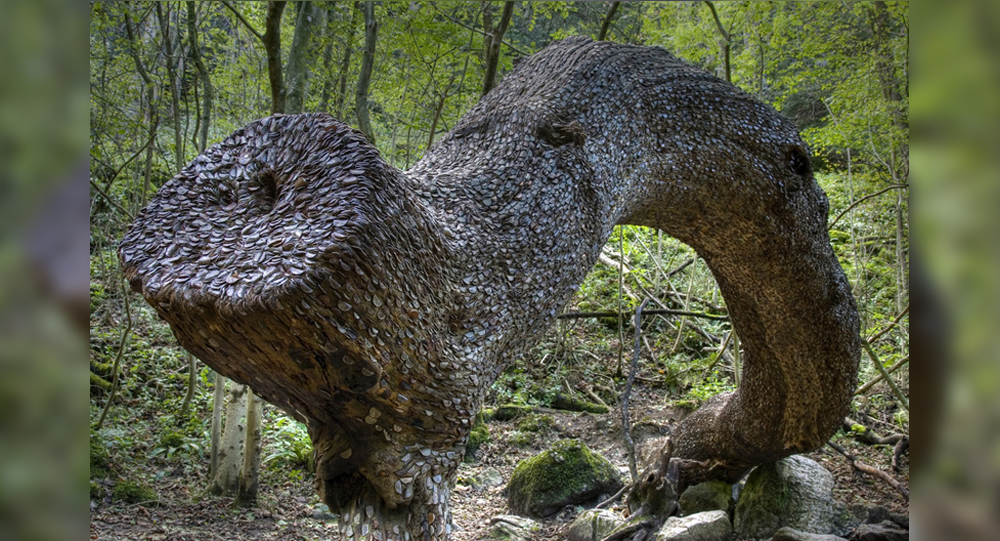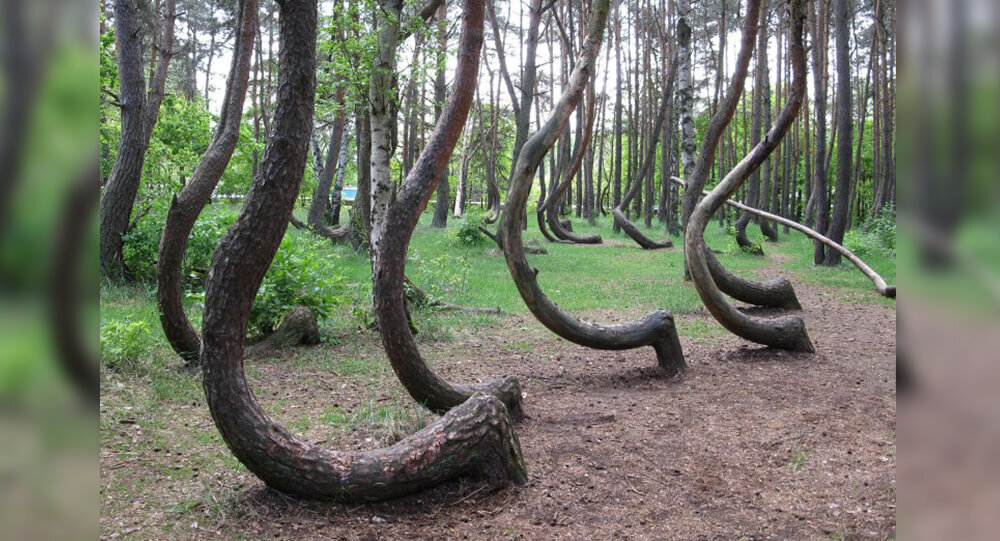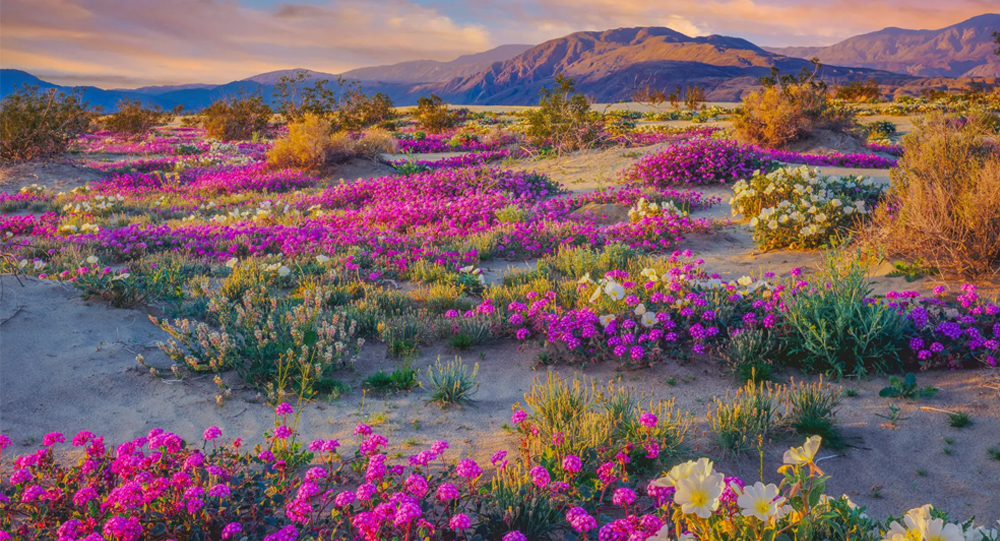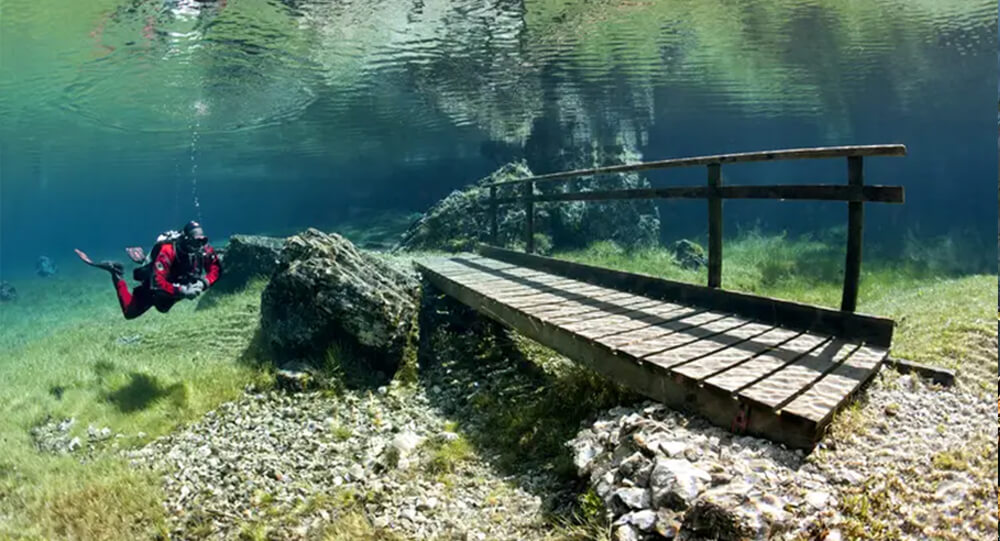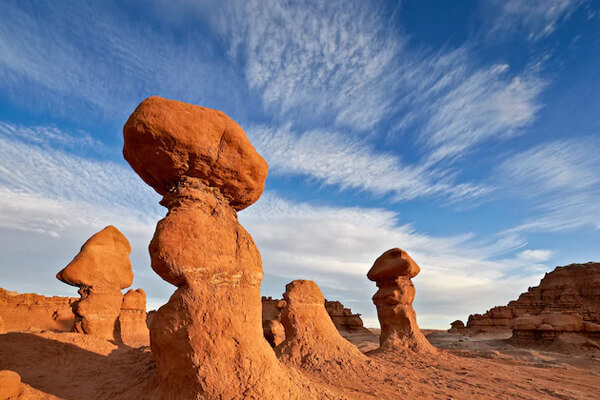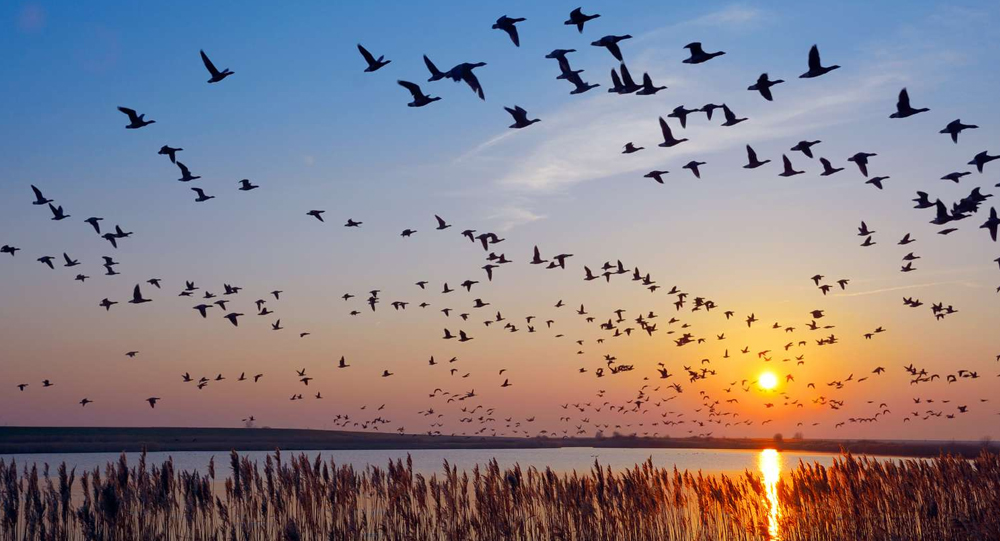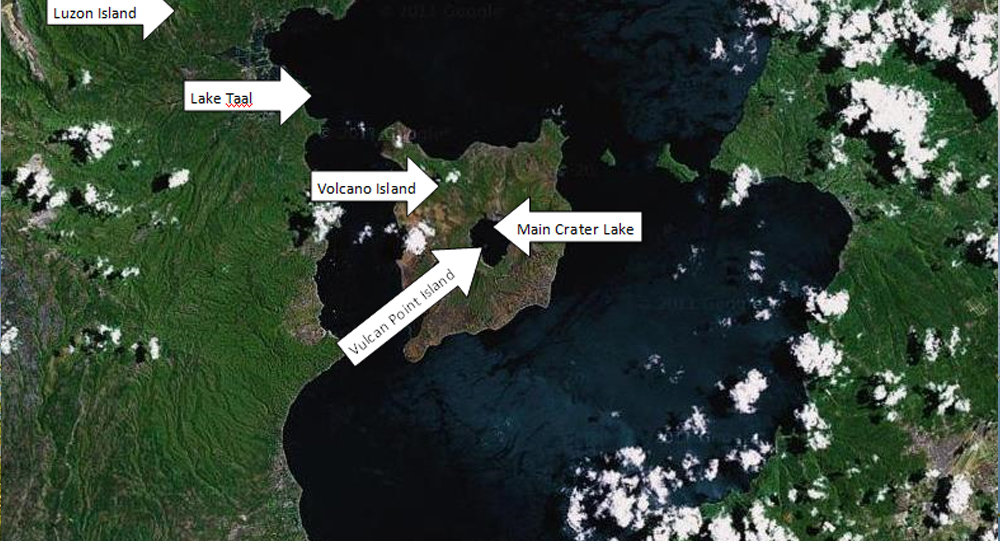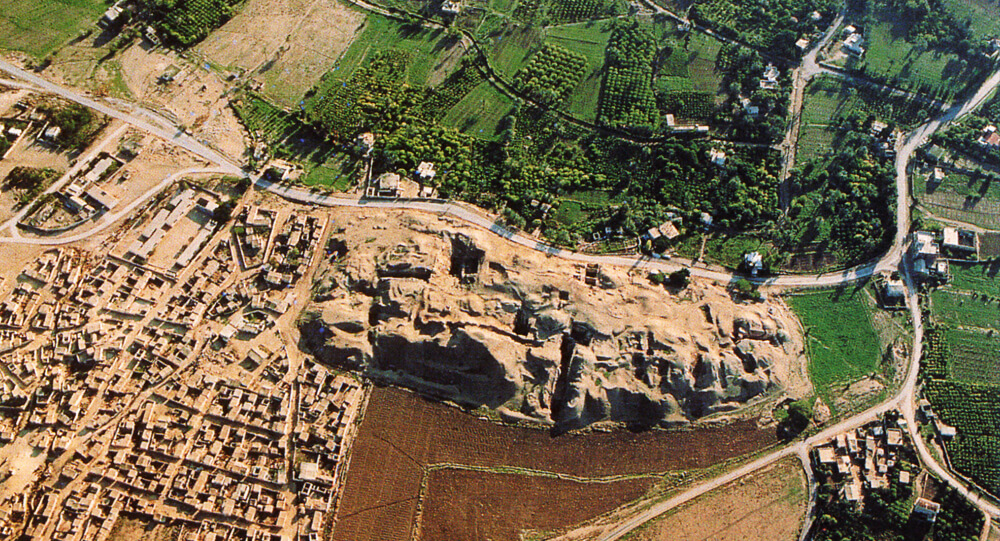In the picturesque Italian region of Piedmont, there is a remarkable natural wonder called The Grana Double Tree. Because of its extraordinary and uncommon qualities, it has captured the attention of both residents and visitors. This article explores the intriguing formation and origins of the Grana Double Tree, highlights its distinctive characteristics, explores the mythology and cultural significance associated with it, and provides information on its ecological significance and conservation efforts. We’ll also explore the scientific underpinnings of this amazing phenomenon and offer a guide for those who want to see the Grana Double Tree for themselves. Come along on a journey as we uncover the mysteries and splendor of this extraordinary double tree in Piedmont.
The Grana Double Tree: A Unique Phenomenon in Piedmont
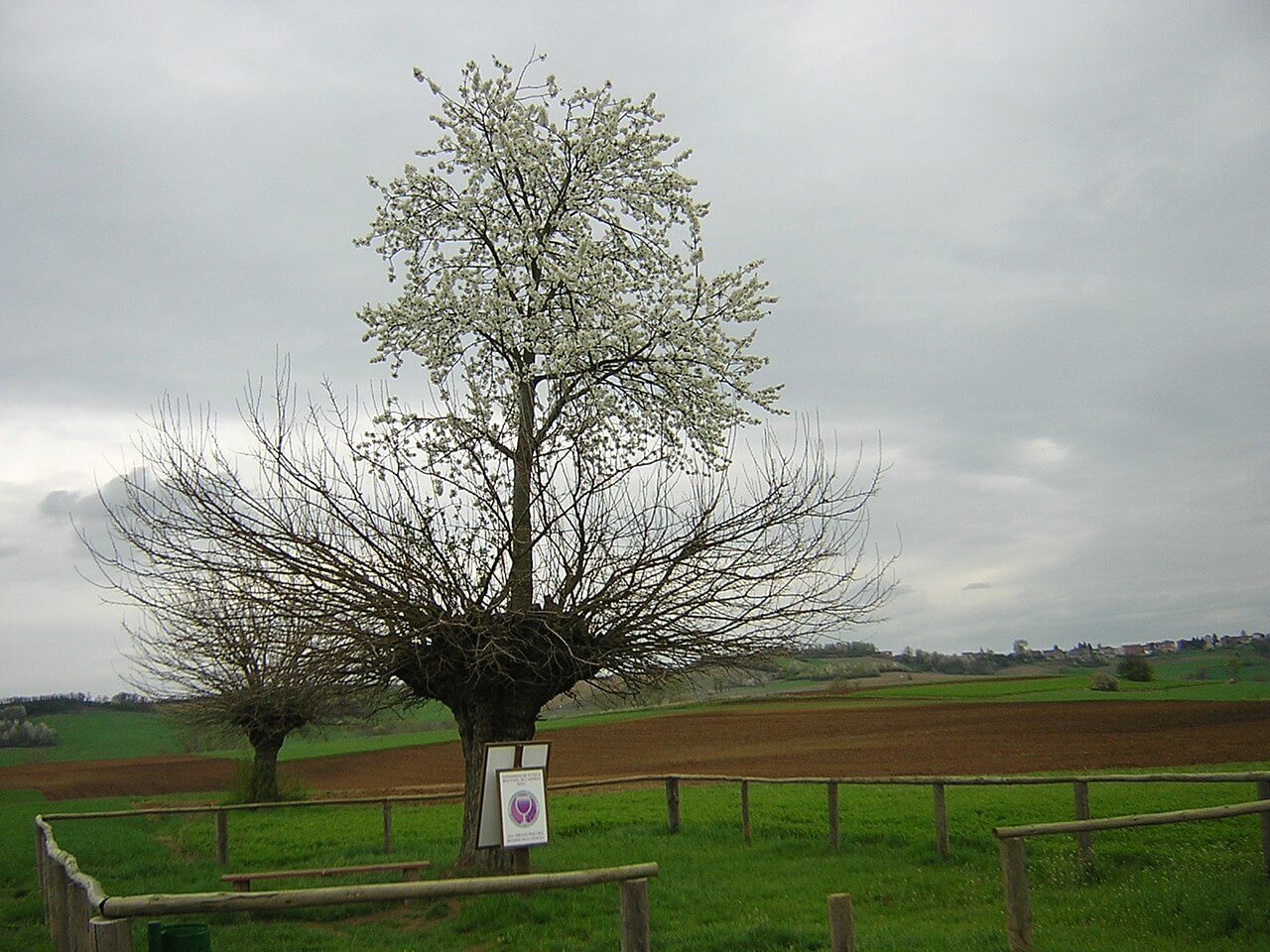
Imagine coming across a tree that defies all logic by having two trunks meld together naturally, producing a stunning spectacle. Hello and welcome to the fascinating world of the Grana Double Tree, a unique natural phenomenon that can be found in the enchanting Italian region of Piedmont. This extraordinary tree intrigues both scientists and nature lovers because it is rare and not just a visual marvel.
The Grana Double Tree occupies a significant position in the region’s natural beauty, nestled within Piedmont’s picturesque landscape. It illustrates the complex processes by which plants evolve and survive, serving as a testament to nature’s resiliency and adaptability. The Grana Double Tree has established itself as a popular destination that welcomes travelers from all over the world as a representation of the area’s distinct charm.
The Fascinating Origins and Formation of the Grana Double Tree
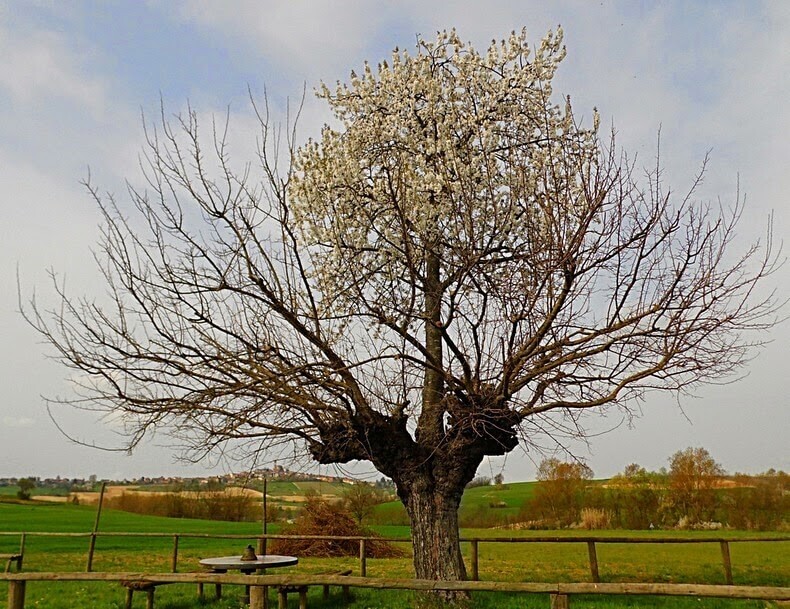
The geological marvels that shaped Piedmont’s landscape millions of years ago are where the Grana Double Tree’s history begins. This extraordinary tree is thought to have been formed as a result of the convergence of specific geological factors, including the makeup of the soil and the presence of particular minerals. These elements came together just right to create the perfect environment for the double trunks to entwine and develop harmoniously.
The Grana Double Tree has a distinctive and captivating appearance thanks to the forces of weathering and erosion that have sculpted it over time. The tree has been shaped by the constant exposure to wind, rain, and other natural elements, which have honed its branches and trunk. This ongoing process has contributed to the tree’s distinct features, making it a true testament to the ever-changing nature of our environment.
Exploring the Distinct Characteristics of the Grana Double Tree
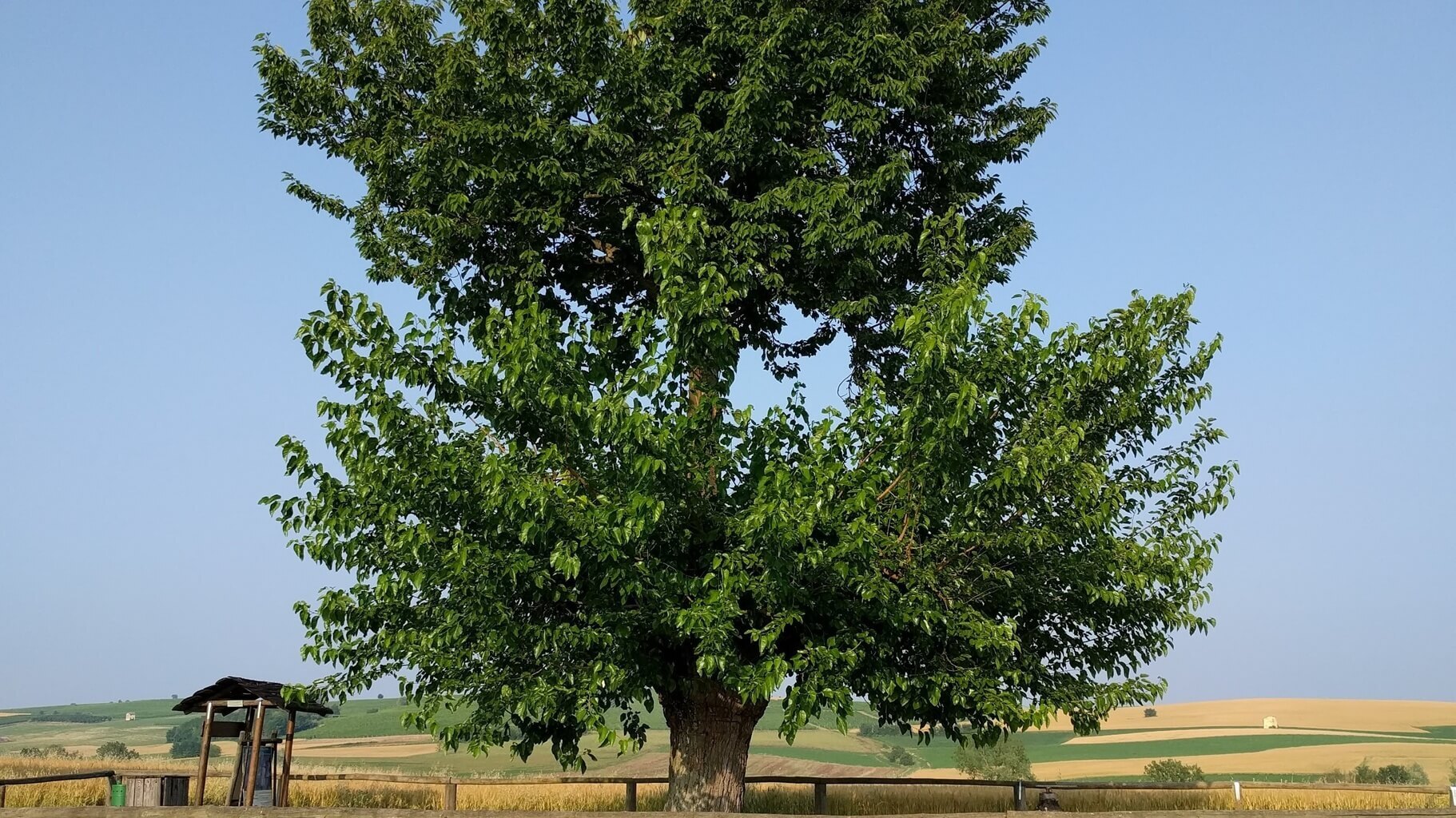
The Grana Double Tree is a hybrid of two distinct tree species, which adds to its appeal and distinction. This phenomenon typically happens when two genetically compatible trees, like oak and beech, grow alongside one another before merging. For those who are fortunate enough to see it, this harmonious combination of species creates an amazing blend of foliage, bark, and colors that is captivating to look at.
In addition to having two trunks, Grana Double Tree has other unique physical characteristics and growth patterns. Its branches entwine so intricately that it is frequently difficult to tell where one tree ends and another begins. In addition to enhancing its aesthetic appeal, this complex fusion exemplifies the tree’s capacity for cooperation and adaptation, defying the accepted rules of individual growth.
Unveiling the Mystery: Scientific Explanations for the Grana Double Tree
The puzzling phenomenon of the Grana Double Tree has aroused scientific interest, giving rise to numerous theoretical explanations and hypotheses. According to one theory, the tree might have come from two separate saplings that grew together over time. The saplings’ close proximity or other environmental factors, like wind or physical disturbances, may have caused this fusion to happen.
The Grana Double Tree, according to a different theory, might have developed as a result of a genetic mutation that caused the tree to develop two trunks rather than one. Although it would be unusual, genetic variations can occasionally cause such anomalies in plant species.
Although the true cause of the Grana Double Tree’s formation remains uncertain, ongoing research aims to unravel the mystery and shed light on this unique phenomenon.
Insights from Research and Studies on the Grana Double Tree
To learn more about The Grana Double Tree and its traits, researchers have conducted studies. The genetic make-up, growth patterns, and anatomical characteristics of the tree have all been thoroughly analyzed in these studies. Scientists have learned more about the development of the double tree and possible factors that may have influenced its formation by contrasting it with its single-trunk counterparts.
According to preliminary research, the Grana Double Tree is remarkably resilient and adaptable, which may help ensure its survival and expansion. Researchers hope to learn important facts that could be used in tree conservation and genetic research by deciphering the genetic code of the tree and examining how it responds to various environmental stressors.
As scientific knowledge surrounding the Grana Double Tree continues to evolve, researchers remain captivated by the tree’s extraordinary nature and its potential contributions to our understanding of plant biology.

When two rivers meet but do not mix in Georgia
The incredible Black and White Aragvi river in Georgia that do not mix up.

The world's largest salt flat, can be seen in space
At 10,582 square kilometers (4,086 sq mi), the Salar de Uyuni (or Salar de Tunupa) is the largest salt flat in the world. It is located in the Potosi and Oruro departments in southwest Bolivia, near the crest of the Andes, and is elevated 3,656 meters (11,995 ft) above the mean sea level.

The Benefits of Forest Bathing and Why It’s Gaining Popularity Worldwide
Forest bathing, or Shinrin-yoku, is an immersive practice of spending mindful time in natural forest environments, and it’s rapidly gaining global popularity due to its proven health benefits. From reducing stress and lowering blood pressure to boosting immunity and enhancing mental wellness, forest bathing offers a natural and accessible way to reconnect with nature and improve overall well-being. Explore the science, sensory experience, and rising trend behind this soothing practice.

Xiaozhai Tiankeng: Exploring the World’s Deepest and Largest Natural Sinkhole
Hidden in the rugged terrain of Chongqing, China, lies Xiaozhai Tiankeng—the world’s deepest and largest natural sinkhole. Known as the “Heavenly Pit,” this colossal natural wonder plunges between 511 and 662 meters deep and stretches over 600 meters wide, dwarfing many familiar landmarks. This article journeys into the geological origins, unique ecosystem, and mysterious caverns beneath Xiaozhai Tiankeng, revealing a spectacular glimpse into Earth’s hidden landscapes.

The Mystical Money Tree of the Scottish Highlands: A 1,700-Year-Old Tradition
In the Peak District Forest of the Scottish Highlands in the UK, there is a unique tree which is laden with only money. This tree laden with money has been studded with British coins for 1700 years, there is no corner of its trunk where a British coin is not stuck.

Poland's Krzywy: The Mysteries of the Crooked trees
In Poland, there is a forest with 400 crooked trees that have a 90-degree bend at the base of their trunks. Despite of numerous possibilities, the real reason and how it evolved remain a mystery.

The Desert That Turns Into a Garden of Flowers Every Few Years
In parts of the desert where life seems most scarce, nature orchestrates an extraordinary transformation: the barren ground bursts into vibrant colors as wildflowers bloom after rare periods of rain. This phenomenon, known as a desert superbloom, is both awe-inspiring and scientifically fascinating. Learn how deserts like the Sonoran transform from arid landscapes into stunning floral displays, the environmental triggers behind this spectacle, and what these blooms reveal about resilience and adaptation in extreme environments.

Toronto’s Camouflaged Electric Substations
For over a century, Canada’s second-largest power company has been disguising its electrical substations in Toronto as beautiful houses that blend perfectly with the neighborhood. These fake houses contain transformers that supply electricity throughout the city.

Sandy Island: The Phantom Island That Fooled Maps and Google Earth for Centuries
Sandy Island, charted since 1774, was long considered a phantom island in the Coral Sea. Despite appearing on maps and Google Earth, it was "undiscovered" by scientists in 2012, revealing only deep ocean instead of land. The island's existence was likely a cartographic error or a misidentified pumice raft.

Why Londoners Celebrate No Trousers Day by Riding the Metro Without Pants
Every year, Londoners participate in a quirky and joyful tradition known as No Trousers Day, where brave commuters board the London Underground dressed normally but without trousers, pants, or pajamas from the waist down. This cheeky event brings laughter, surprises, and a shared sense of community to the usually dull winter commute, reflecting a playful rebellion against the mundane and a celebration of spontaneity. Discover the origins, spirit, and fun behind London’s beloved No Trousers Tube Ride.

Grüner See, The Park That Turns Into A Giant Lake Naturally
There is a place in Austria called Grüner See which is a dry park in winter and turns into a 12-meter-deep lake in summer.

The unusual ability of 'sea nomads' to hold breath is due to one major organ
The Bajau are a group of people that practice extreme free diving, submerging for up to 13 minutes at depths of about 200 feet. These ‘sea nomads’ dive to catch fish or look for natural materials that can be used in crafts in the waters that surround the Philippines, Malaysia, and Indonesia.

Top 10 Greatest and shocking Archaeological Discoveries of All Time
While we're all locked at home, there's no better way to escape to another time and place than to learn about amazing archeological sites and discoveries from around the world. Here are the 10 greatest and shocking archaeological discoveries —and don't be shocked if they inspire future trip plans whenever it's safe to do so again.

11 Amazing and famous rock formations around the world
For many years, people have been attracted to these spectacular-looking boulders because of their shape, components, location, or picturesque surroundings. Many of them are massive, and seeing them is an amazing experience.

How Migratory Birds Navigate Thousands of Miles Without Getting Lost
Migratory birds undertake epic journeys spanning thousands of miles with astonishing precision, never losing their way. Their secret lies in a remarkable blend of innate senses, learned experience, and sophisticated navigation tools—ranging from the Earth's magnetic field to celestial clues and mental maps. Explore how these feathered travelers accomplish one of nature's most astounding feats through science, intuition, and adaptation.

Circular Bridge Built To Slow Down Drivers So That They Would Enjoy The View (Photos)
Uruguay’s Laguna Garzon Bridge splits into a circle so drivers can slow down and enjoy the view. It also prevents head-on collisions and creates a walkway for pedestrians.

Mystery SOLVED: blood Rain in India
The dissemination of spores of microalgae has been identified as the origin of the 'Blood Rain' phenomena, according to a new study by Indian and Austrian experts. Since 1896, reports of intermittent red-colored rain in portions of Kerala and Sri Lanka have been coming in. The most recent one occurred in 2013 over Kerala.

Top 10 Mysterious And Least Explored Places On Earth
Some people believe that there is nothing unexplored remaining on earth but the world doesn't cease to surprise us with its mysteries. Today I'll tell you about the lost places of the planet and animals that live only there.

The Mystery of Canada's Magical Spotted Lake
Lake Khiluk, the world's most mineralized lake, and one of the most mysterious places on Earth. Each of these spots has a distinct chemical content and is said to cure various diseases.

Taal volcano: The Island in a Lake on an Island in a Lake on an Island
Lake Taal, on the island of Luzon, in the Philippines archipelago's northernmost reaches, is unique. It's now one of just two lakes in the world with a third-order island within it, with the lake itself being a part of the order. In other words, Lake Taal, which is located on the island of Luzon, has a volcano (Volcano Island), a lake (Crater Lake), and its own little island (Vulcan Point).

How European Rabbits Took over Australia
In 1859, wealthy settler Thomas Austin released 13 wild rabbits on his Australian estate. By 1920, their population grew to 10 billion.

Famous abandoned cities and ghost towns in the world
Learn the stories behind seven of the world's most renowned abandoned cities and villages, from the infamous Chernobyl nuclear catastrophe zone to Hashima Island.

Ancient Jericho: The First Walled City In History
The ancient city of Jericho is the world's oldest walled city, with evidence of stone fortifications dating back nearly 9000 years.

Darwin's Arch collapse
According to news sources, the top of Darwin's Arch, a famous natural stone archway in the northern Galapagos Islands, has collapsed into the waves.

How Sweden’s 300,000 Oak Trees Became an Unintended Legacy: The Naval Forest That Outlived Wooden Warships
In the 1830s, Sweden planted 300,000 oak trees for the purpose of building naval ships. However, by the time the trees matured, metal warships had replaced the need for wooden ones. The forest still stands to this day.
